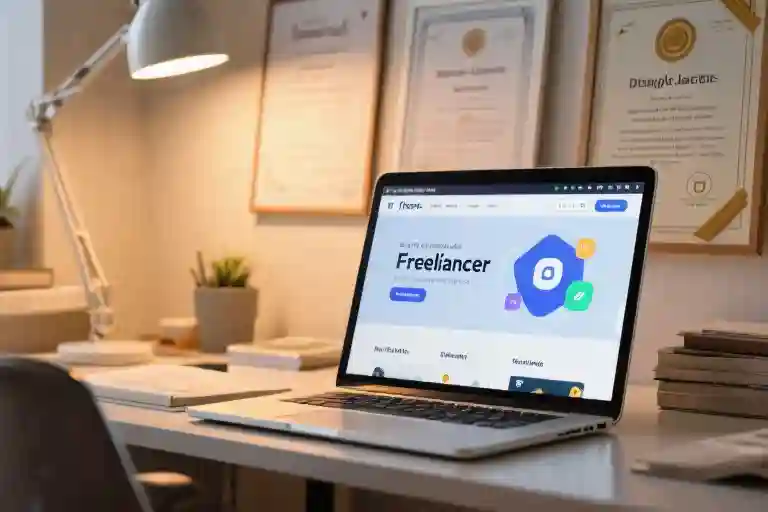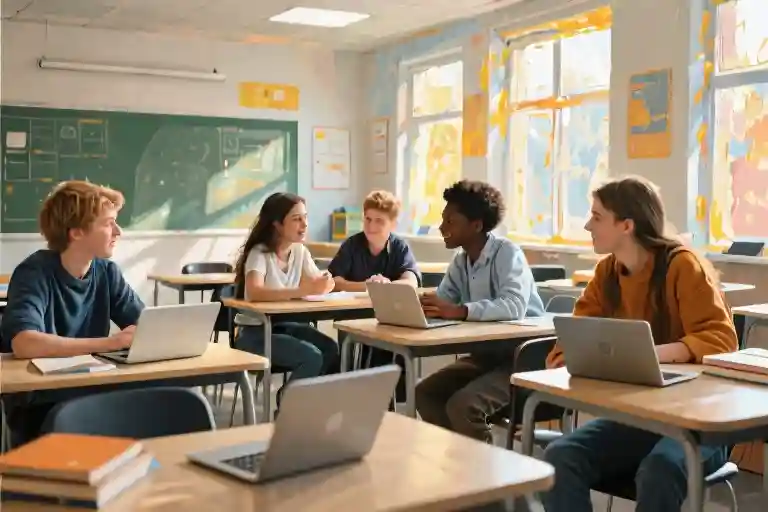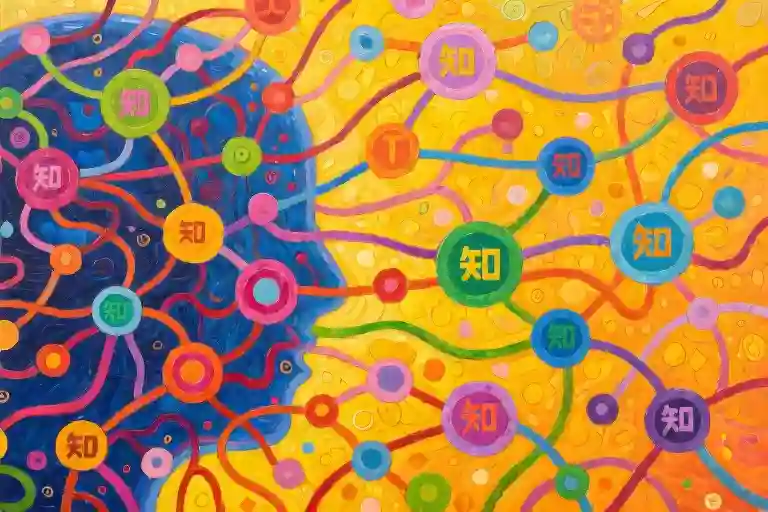The fluorescent lights hummed softly above rows of students bent over standardized test papers, their pencils scratching in unison. Meanwhile, across town in a sunlit coworking space, a freelance graphic designer juggles three client projects simultaneously – responding to Slack messages, revising a logo mockup, and calculating her hourly rate for a new contract. These two scenes exist in the same world but operate on entirely different principles. According to Statista, 37% of the global workforce will engage in freelancing by 2024, yet our education systems still prepare students for the disappearing era of single-employer careers.
My university diploma hangs framed in my home office, a beautiful parchment that never taught me how to say no to unreasonable client demands or calculate self-employment taxes. The disconnect between traditional education and the realities of the freelance economy isn’t just theoretical – it’s something I’ve lived through during six years as an independent education consultant. What began as temporary work between teaching jobs became a revelation about how fundamentally unprepared our schools leave us for modern work realities.
The freelance boom isn’t coming – it’s already here. Platforms like Upwork report annual revenues exceeding $500 million, while Fiverr’s marketplace hosts over 500 service categories. Yet walk into any high school career counseling office, and you’ll likely find the same organizational charts and resume templates that dominated twenty years ago. This gap between education’s linear pathways and freelancing’s looping journeys creates unnecessary struggles for those venturing into independent work.
What makes this transition particularly jarring is how many essential freelancing skills never appear on a syllabus. Negotiation tactics don’t get graded alongside calculus. Building a personal brand isn’t measured like reading comprehension. The ability to pivot between different project types and client personalities – arguably the most crucial freelancing skill – has no equivalent in standardized testing. My most valuable professional lessons came not from lecture halls but from late nights troubleshooting client emergencies and coffee meetings with fellow freelancers exchanging hard-won wisdom.
This isn’t about dismissing traditional education’s value but recognizing its blind spots. The same system that taught me to analyze Shakespeare beautifully failed to explain how to price my analysis as a service. We spend years learning to follow instructions flawlessly, then enter a workforce that rewards those who write their own rules. The cognitive dissonance hits hardest when talented individuals – educated, capable, but trained for a different era – struggle to translate their knowledge into sustainable independent careers.
The classroom’s quiet focus and the freelancer’s chaotic multitasking represent more than just different work styles – they embody conflicting philosophies about how we prepare people for economic participation. One values uniformity and measurable outcomes; the other thrives on adaptability and unique value propositions. As the freelance economy grows, this mismatch becomes increasingly costly, leaving capable individuals unprepared to navigate the very opportunities reshaping our work landscape.
The Education-Freelancing Gap
The classroom walls still echo with industrial-era assumptions. For twelve years, we’re seated in straight rows, trained to follow instructions, and measured by standardized tests – all preparing us for careers that increasingly don’t exist in their traditional forms. The freelance economy isn’t just growing; it’s rewriting the rules of work, while education clings to fading blueprints.
Five outdated assumptions still shape most curricula:
- The Employer Myth
That stable, long-term employers await graduates. The reality? 57% of freelancers report that clients now prefer project-based contracts over permanent hires (Upwork 2023). My first consulting gig lasted three weeks – a duration that would’ve horrified my career counselor. - The Specialization Fallacy
Degree programs drill deep into single disciplines. Yet my highest-paying project required blending curriculum design, basic video editing, and psychology – skills I cobbled together from YouTube tutorials and coffee chats with friends in different fields. - The Permission Structure
Schools condition us to seek validation through grades and diplomas. Freelancing demands self-authorization. Nobody asked for my teaching certificate when a startup needed workshop materials – they needed proof I could deliver engaging content. - The Predictability Promise
Academic calendars march with metronomic regularity. Meanwhile, my income fluctuates 30% month-to-month, requiring financial agility no math class taught. The most valuable equation I’ve learned? Emergency fund = 3 x worst dry spell. - The Solo Achievement Model
Individual testing prepares us poorly for the collaborative reality of freelancing. My current project involves a Ukrainian developer, a Brazilian illustrator, and a Malaysian copywriter – a team assembled across time zones, not classrooms.
Contrast this with what the freelance marketplace actually rewards:
- Skill Stacking Over Single Expertise
The graphic designer who understands SEO basics commands higher rates. My colleague combines coding with storytelling to create interactive learning modules – a hybrid skill set no university department currently offers. - Portfolio Over Pedigree
Client inboxes fill with work samples, not transcripts. A well-curated GitHub profile often opens more doors than a computer science degree, especially for international projects where credential systems don’t align. - Adaptability Over Accuracy
School rewards precise answers to predefined questions. Freelancers thrive on reframing problems. When a client rejected my initial proposal, the pivot to their actual needs created a better outcome – and a long-term relationship. - Network Effects Over Individual Merit
Referrals generate 85% of my projects. Yet networking is treated as extracurricular rather than core curriculum. That casual conversation at a education tech meetup? It led to my most consistent client. - Iteration Over Perfection
Teachers deduct points for wrong answers. The marketplace pays for rapid prototypes and continuous improvement. My early project deliverables would’ve earned C-grades academically but satisfied real-world clients who valued speed and responsiveness.
The gap isn’t just theoretical. Last quarter, I interviewed 42 freelancers across fields. 89% reported their most valuable skills were self-taught or peer-learned, with only 11% attributing crucial abilities to formal education. As one web developer put it: “My degree taught me Java; Reddit taught me how to freelance.”
This disconnect manifests in practical struggles. New freelancers often excel at their craft but flounder at pricing, contracts, or client communication – the unglamorous essentials that determine sustainability. We emerge from education as skilled swimmers thrown into ocean currents without navigation tools.
Yet within this tension lies opportunity. The very flexibility that makes freelancing daunting also allows custom-fit career paths. My former classmate the “mediocre student” now thrives as a fractional CMO for small businesses, combining his scattered interests into a valuable niche. The system that failed to categorize him became his advantage.
The Education They Never Gave You
The university library smelled like anxiety and instant coffee. I remember staring at my economics textbook, highlighting passages about supply curves and perfect competition, while secretly worrying about how any of this would help me negotiate my first freelance contract. That textbook never mentioned how to calculate what your time is actually worth when a client asks for “just a quick revision.”
Six years into freelancing as an educational consultant, I’ve compiled what I call my “$100,000 Curriculum” – the essential skills that actually generate income but somehow never appeared on any syllabus. These aren’t the theoretical frameworks I memorized for exams, but the messy, practical competencies that keep clients coming back:
The School Version vs. The Freelance Reality
- Classroom Skill: Writing academic essays
Freelance Translation: Crafting proposals that convince strangers to pay you - Classroom Skill: Solving predefined problems
Freelance Translation: Identifying which problems are worth solving (and which clients are worth keeping) - Classroom Skill: Working individually for grades
Freelance Translation: Building networks that provide work when LinkedIn goes quiet
The turning point came during my first major project. A client asked, “Can you make this training module feel less like a college lecture and more like a conversation?” My degrees hadn’t prepared me for this – but years of being the student who asked too many questions suddenly became my professional advantage.
What schools call “soft skills” are the hard currency of freelancing. Emotional intelligence determines whether you panic when a deadline moves up, or calmly renegotiate terms. The ability to learn quickly from YouTube tutorials often proves more valuable than recalling textbook diagrams. And that art class I barely passed? Turns out visual storytelling matters more than perfectly shaded still-life drawings when explaining complex concepts to clients.
Here’s the uncomfortable truth no commencement speech mentions: Clients pay for solutions, not knowledge. The market doesn’t care about your GPA when a project is late. What matters is whether you can:
- Translate jargon into clear value
- Turn chaotic feedback into actionable steps
- Package your unique perspective into services people will buy
The most liberating moment in my freelance journey was realizing education doesn’t stop when you leave school – it just changes classrooms. My clients became my professors, online courses replaced textbooks, and every project deadline served as both exam and tuition payment. That economics textbook gathering dust on my shelf? It never taught me the most important equation: Your rate = (Solution value + Relationship capital) / Hours spent.
Maybe traditional education wasn’t the wrong path – just an incomplete map. The blank spaces where they didn’t teach us to price our work or handle difficult clients? Those became the territories where self-taught freelancers build entire careers.
The New Learning Playbook
The university diploma framed on my wall has become something of a museum piece – an artifact from an era when credentials followed predictable paths. These days, my most valuable qualifications live on GitHub repositories and LinkedIn testimonials. The shift from institutional validation to practical proof mirrors what’s happening across the freelance economy.
Take Michael, a 23-year-old developer who never finished his computer science degree. His breakthrough came when a startup discovered his contributions to an open-source project solving real-time translation issues. ‘They never asked for my transcript,’ he told me. ‘The code either worked or it didn’t.’ His story reveals the new currency in freelancing: demonstrable competence trumps theoretical knowledge.
Then there’s Sarah, a former high school teacher who built her entire tutoring practice through Instagram. While traditional educators were scrambling to adapt to online platforms during pandemic shifts, she’d already cultivated an audience of 18,000 followers by sharing bite-sized grammar tips. ‘My classroom became global overnight,’ she said. Her monthly income now triples what she earned at the school, all through leveraging social media as both portfolio and pipeline.
These unconventional paths share three critical elements that schools rarely teach:
Autonomy as curriculum – Neither Michael nor Sarah waited for permission to build their professional identities. They identified problems (open-source documentation gaps, confusing grammar rules) and created solutions without assigned prompts. This self-directed learning mirrors the freelance reality where clients pay for initiative, not compliance.
Portfolio over paperwork – A GitHub commit history tells a richer story than a transcript’s letter grades. Sarah’s Instagram feed demonstrates teaching skills more vividly than any certification binder. Digital platforms have become the new show-don’t-tell proving grounds where work samples speak louder than credentials.
Social proof as validation – Michael’s reputation grew through peer code reviews, Sarah’s through follower engagement. In freelance ecosystems, credibility compounds through visible interactions – stars, shares, and comments become the new letters of recommendation.
The most successful freelancers I’ve interviewed share this pattern: they treat the internet as both classroom and career fair. A designer might use Behance as their sketchbook, a writer might treat Medium as their thesis defense. What makes these approaches work isn’t just technical skill, but the meta-competence of learning in public – making their growth process visible and valuable to potential collaborators.
Traditional education often treats learning as a private endeavor, with progress measured by solitary test performance. The freelance economy demands the opposite: visible thinking, shareable works-in-progress, and the ability to articulate your learning journey. Perhaps the most radical lesson from these new learning playbooks is that education doesn’t need to happen before work – the work itself becomes the education when approached with intentional reflection.
As I update my own consulting offerings each quarter, I realize my most marketable skills emerged from documenting the learning process itself. The workshop materials I sell originated as public blog posts tracking my experiments in curriculum design. My most reliable clients discovered me through podcast appearances where I discussed professional failures. In this new paradigm, learning and earning aren’t sequential phases, but simultaneous activities – provided you’re willing to let the world watch you figure things out.
Building the Adaptive School
The most unsettling realization from my six years in the freelance economy wasn’t that schools failed to teach specific technical skills—it was discovering how deeply traditional education misunderstands the rhythm of modern work. While classrooms still operate on industrial-era schedules (45-minute periods, 10-week terms), successful freelancers think in project cycles, skill sprints, and continuous feedback loops. This temporal mismatch creates more damage than any curriculum gap.
Three Immediate Classroom Shifts
- English Class as Client Communications Lab
That essay on Shakespeare’s sonnets? Have students rewrite it as a client pitch for a poetry anthology app. Literature analysis becomes market research, thesis statements transform into value propositions. I’ve seen teachers who made this shift report something fascinating—students who struggled with traditional literary criticism often excel at extracting commercial insights from texts. It’s not dumbing down; it’s translating critical thinking into multiple dialects. - Math as Financial Scenario Gym
Instead of solving for x in vacuum-sealed word problems, have students calculate:
- The hourly rate needed to earn $50,000 annually after platform fees and healthcare costs
- The profit difference between charging $200 for a 10-hour project versus $25/hour
These aren’t hypotheticals—they’re calculations I do weekly. When schools treat math as purely abstract, we deprive students of numerical literacy for life’s real equations.
- History as Case Study Repository
Every historical event contains freelance lessons:
- How Renaissance artists negotiated patronage contracts
- What the Silk Road traders can teach about cross-cultural client management
One history teacher I coached now has students analyze Eleanor Roosevelt’s freelance writing career alongside her political work—showing how multiple income streams fueled social impact.
The Infrastructure We Need
Micro-credentials alone won’t fix the disconnect. We need schools to become what I call “career weather stations”—places that:
- Track skill climate patterns: Partner with platforms like Upwork to identify emerging competency demands
- Issue adaptive advisories: Short workshops when market shifts occur (e.g., AI copywriting tools emergence)
- Maintain alumni project banks: Where current students can contribute to real graduate-led initiatives
A vocational school in Amsterdam does this beautifully—their “Freelance Futures” program uses alumni freelancers as client proxies for student projects, with real money changing hands (in safe, small amounts). The surprising benefit? Alumni report getting better at explaining their work to clients through teaching it.
What excites me most isn’t fancy tech or radical restructuring. It’s the low-hanging fruit: every traditional subject already contains freelance-ready skills if we slightly adjust our lens. That English teacher helping students craft stronger emails? They’re teaching client communications. The math teacher explaining compound interest? That’s freelance retirement planning. We don’t need to scrap the system—just help it speak the language the world now uses.
What You Can Do Tomorrow
The gap between traditional education and the freelance economy isn’t just theoretical—it shows up in small, everyday moments. A student asks why they need to memorize facts available in three seconds online. A parent wonders if piano lessons will matter more than Python skills. A teacher feels frustrated when their carefully planned curriculum meets blank stares from students who just want to know ‘how this helps me get clients.’
Here’s the good news: you don’t need to wait for systemic change to start adapting. Whether you’re a student, educator, or parent, there are concrete steps you can take right now to bridge this divide.
For Teachers: The 15% Experiment
Start small by redesigning just one class project this semester. Instead of a standard research paper, have students:
- Create a Fiverr-style service listing for their knowledge
- Draft real client emails solving actual problems
- Build a simple website showcasing their learning journey
These aren’t radical changes, but they shift the focus from ‘what you know’ to ‘how you apply it.’ I’ve seen history teachers have students create museum TikTok tours instead of term papers—the research rigor stays, but the delivery mirrors modern freelance work.
For Parents: The After-School Syllabus
That guitar collecting dust? Those unused art supplies? They might be more valuable than you think. Encourage your child to:
- Start a passion project (a podcast, Etsy shop, coding experiment)
- Document the process publicly through posts or videos
- Connect with three people doing similar work online
These activities build the muscle of self-directed learning far better than another prep course. The graphic designer who hired my nephew last summer didn’t care about his grades—she loved seeing his Instagram sketches evolve over time.
For Students: Your Stealth Education
Your formal education gives you structure; your freelance education gives you wings. Try this today:
- Pick one skill your classes ignore (negotiation, SEO, contract basics)
- Spend 20 minutes learning it through YouTube or forums
- Apply it immediately—even artificially (redo a class assignment as a ‘client project’)
When I mentored a college senior last year, we turned her literature essays into blog posts for indie authors. By graduation, she had paying editing clients—all while completing her traditional degree.
The most common objection I hear is ‘But what about fundamentals?’ No one’s arguing against math or literacy. The question is whether we teach these as dead artifacts or living tools. Shakespeare understood human nature—could students analyze his work through the lens of crafting better freelance client questionnaires?
Which brings us to the final, uncomfortable question: If careers now change faster than education cycles, what exactly are we preparing for? The answer might lie in teaching people how to learn, unlearn, and relearn—not just during school years, but as an ongoing practice. Maybe that’s the core skill no algorithm can replace.
So here’s your real homework: Tonight, ask yourself—what’s one assumption about education you’ve always accepted without question? Then imagine how your work (or your child’s future) might look if that assumption stopped being true tomorrow. The best education for the freelance age might be learning to sit comfortably with that uncertainty.






Very interesting details you have mentioned, appreciate it for putting up. “The best time to do a thing is when it can be done.” by William Pickens.